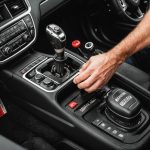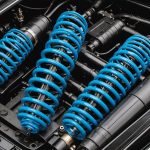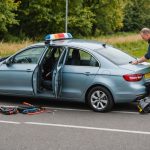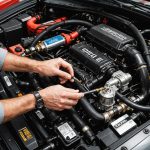Understanding Backup Sensors in Urban Environments
In urban settings, backup sensors play a crucial role in enhancing vehicle safety and pedestrian protection. These sensors operate using ultrasonic or electromagnetic technology to detect objects in proximity to a vehicle’s rear. By emitting signals and measuring their return time, they calculate the distance to potential obstructions, alerting drivers with audible beeps or visual indicators.
Urban driving can pose unique challenges due to dense populations and confined spaces, which heightens the necessity for effective sensor systems. Vehicle safety is particularly crucial in crowded areas where pedestrians, cyclists, and other vehicles are in close proximity. By providing real-time alerts, backup sensors help prevent collisions and improve situational awareness.
Additional reading : Maximizing Windshield Defrosting Efficiency in Freezing Temperatures: Essential Tips for Cold Weather Performance
Several factors influence the performance of backup sensors in urban environments. Narrow streets, parked vehicles, and nearby buildings can affect signal accuracy and sensor range. Weather conditions such as rain or snow may also impact sensor functionality by causing false alerts or detection failures. Choosing sensors with robust technology and adaptive algorithms can help mitigate these challenges.
Ensuring these sensors are well-calibrated and maintained allows drivers to navigate urban landscapes more confidently, reducing the risk of accidents and promoting safer roads for everyone involved.
Also to see : Maximizing Safety: Essential Tips for Ensuring Your Vehicle”s Automatic Transmission Operates at Peak Performance
Maintaining Backup Sensors for Optimal Performance
Proper sensor maintenance is integral to ensuring your vehicle’s performance. Regular cleaning techniques are amongst the most effective ways to maintain backup sensors. To begin, gently wipe the sensors with a soft, damp cloth to remove dirt and debris, which can obstruct sensor clarity. Avoid abrasive materials that could damage sensor surfaces.
Periodic checks are essential for reliable sensor function. Consult your vehicle’s manual for recommended checks and establish a maintenance schedule. This schedule should include monthly inspections and cleaning to preempt any lingering issues that could escalate over time. Such regularity is instrumental in sustaining the optimal performance of your vehicle.
The importance of using quality aftermarket parts cannot be overstated. When replacements are necessary, selecting high-standard parts ensures your sensors continue to operate at peak efficiency. Opting for quality aftermarket parts mirrors the performance of original parts, maintaining system reliability and longevity.
Remember, timely sensor maintenance transcends mere cleaning. It’s about holistic care involving regular checks and quality replacements. By integrating these practices into your vehicle care routine, you are poised to enjoy both improved safety and enhanced driving experience.
Common Issues with Backup Sensors and Troubleshooting
Backup sensor issues can be a source of frustration for many vehicle owners. These sensors, designed to enhance safety, may sometimes malfunction, affecting their reliability. Identifying the root causes of these malfunctions is the first step in effective troubleshooting.
Frequent Causes of Backup Sensor Malfunctions
Backup sensor issues can often be traced to dirt or debris obstructing the sensors, causing false readings. Additionally, electrical faults or software glitches can impair sensor reliability, making it essential to inspect these components regularly. Damage from minor collisions can also impact sensor performance.
Step-by-Step Troubleshooting for Common Problems
- Inspect and Clean: Begin by examining the sensors for dirt or debris. Clean them gently using a soft cloth.
- Check Connections: Ensure all electrical connections are secure. Loose wires can result in unreliable sensor readings.
- Reset the System: Sometimes, simply resetting the system can resolve software-related glitches.
When to Seek Professional Assistance
If basic troubleshooting fails to resolve backup sensor issues, it might be necessary to seek professional help. Experts can conduct comprehensive diagnostics, ensuring the sensors function reliably. Persistent problems, or those linked to internal electrical systems, should not be ignored and require professional evaluation for safety and performance assurance.
Safe Driving Practices to Enhance Sensor Efficiency
Driving in urban environments presents unique challenges. Employing safe driving practices becomes crucial to ensure not only personal safety but also the optimal performance of the vehicle’s sensors. Understanding these practices can dramatically improve driving efficacy.
One vital practice is maintaining awareness and exercising caution when reversing in urban settings. Urban driving tips emphasize being alert to pedestrians and other vehicles. Backup sensors are invaluable tools in these scenarios, providing real-time feedback to the driver about nearby obstacles. To effectively use these sensors during parking maneuvers, it’s essential to heed the sensor alerts actively and adjust the vehicle’s path accordingly. This approach can significantly reduce the risk of collisions.
However, backup sensors are not infallible, especially in crowded environments. Blind spots can still pose a threat, making it essential to adopt strategies that mitigate these risks. Techniques such as adjusting side mirrors properly, using cameras when available, and performing shoulder checks can enhance sensor usage. In dense traffic, these actions ensure that drivers have a comprehensive view of their surroundings, thereby supporting safer and more informed decisions.
Technological Advancements in Backup Sensor Systems
The sensor technology in vehicles has undergone significant enhancements, ensuring better safety and efficiency. With the advent of advanced sensor systems, traditional sensor models are becoming less common. These advanced systems incorporate innovative approaches such as ultrasonic, radar, and lidar technologies, which greatly improve the reliability and precision of backup sensor systems.
A key advantage of these new technologies is their ability to provide accurate distance measurements and object detection, even in challenging environments. Unlike traditional sensors, which relied heavily on basic sonar methods with limited range, today’s systems offer superior functionality.
Advancements in vehicles with backup sensor technology are evident as automakers integrate more sophisticated systems. This evolution allows vehicles to adapt to ever-changing urban landscapes, facilitating smarter navigation and parking. Furthermore, these sensors can warn drivers of potential obstacles more effectively, enhancing overall driving safety.
The future trends in backup sensor technology are promising, especially with the rise of autonomous driving. As cities evolve, there will be a greater emphasis on these systems seamlessly interacting with smart city infrastructures. Urban driving integration will thus be crucial, ensuring that vehicles communicate efficiently within high-density areas, benefitting from real-time data and traffic management solutions.
Comparing Vehicle Models with Advanced Backup Sensor Features
When it comes to vehicle comparisons, examining sensor features is crucial for understanding advanced safety technology. Leading models have significantly improved backup sensors, designed to enhance safety in urban driving scenarios.
Many top brands, such as Audi, BMW, and Ford, have integrated cutting-edge sensor technology into their vehicles. For example, Audi’s system uses a combination of ultrasonic and radar sensors to provide precise feedback, making navigation in tight city spaces much easier. Similarly, BMW’s sensors are praised for their high precision and clarity, thanks to the deployment of its advanced Surround View camera system. Ford models often come equipped with innovative sensors that efficiently detect obstacles, preventing minor collisions in congested areas.
Consumer feedback highlights noteworthy distinctions in sensor performance. Users frequently commend Audi for its accuracy and real-time responsiveness, which is particularly effective for parallel parking. Meanwhile, BMW is often appreciated for offering a panoramic view that assists in complex maneuvers. Conversely, some Ford users have noted variability in sensor sensitivity, suggesting room for improvement.
Overall, these advanced sensor features can make urban driving safer and more enjoyable. When purchasing a vehicle, potential buyers should consider the effectiveness of these systems, alongside personal preferences and driving needs.











